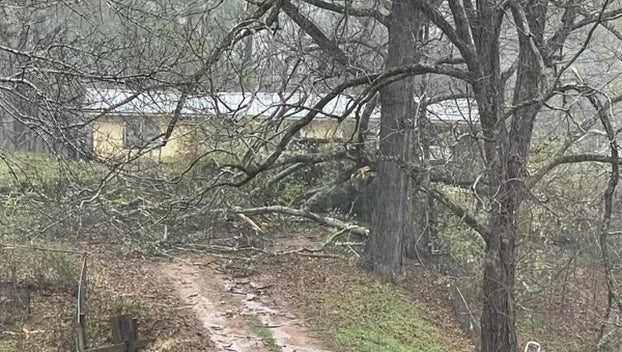Tropical Storm Cindy comes ashore in southwest Louisiana
Published 11:06 am Thursday, June 22, 2017
NEW ORLEANS (AP) — Gulf Coast states were in for a third day of rough weather as Tropical Storm Cindy sloshed ashore early Thursday in southwestern Louisiana.
Already blamed for one death in Alabama, Cindy was expected to keep churning seas and spin off bands of severe weather from eastern Texas to northwestern Florida.
The storm’s maximum sustained winds had decreased to near 40 mph (64 kph) Thursday morning with additional weakening expected, the U.S. National Hurricane Center said.
A boy on an Alabama beach was struck and killed Wednesday by a log washed ashore by the storm. Baldwin County Sheriff’s Capt. Stephen Arthur said witnesses reported the 10-year-old boy from Missouri was standing outside a condominium in Fort Morgan when the log, carried in by a large wave, struck him. Arthur said the youth was vacationing with his family from the St. Louis area and that relatives and emergency workers tried to revive him. He wasn’t immediately identified.
It was the first known fatality from Cindy. Otherwise, the storm was blamed for widespread coastal highway flooding, rough seas and scattered reports of power outages and building damage caused by high winds. There were numerous reports of waterspouts and short-lived tornadoes spawned by the storm.
National Weather Service forecasters estimated the storm had dumped anywhere from 2 to 10 inches (50 to 250 millimeters) of rain on various spots along the Gulf Coast from southern Louisiana to the Florida panhandle as of Wednesday. And more rain was on the way.
Alek Krautmann of the National Weather Service in Slidell, Louisiana, said Thursday’s pattern would likely be much like Wednesday’s: Bands of intermittent, sometimes heavy rain spinning onto the coast.
In southwest Louisiana, not far from where Cindy came ashore before dawn Thursday, motorists in trucks were driving through knee-high water in the streets.
Some other drivers, though, were pulling over Thursday morning and not attempting to navigate the flooded roads in Cameron Parish, Louisiana. Some of the low-lying clouds were rotating, and gusty winds whipped across the landscape.
In Gulfport, Mississippi, Kathleen Bertucci said heavy rainfall Wednesday sent about 10 inches of water into her business, Top Shop, which sells and installs granite countertops.
“It’s pretty disgusting, but I don’t have flood insurance because they took me out of the flood zone,” said Bertucci, whose store is near a bayou. “We’re just trying to clean everything up and hope it doesn’t happen again.”
In nearby Biloxi, a waterspout moved ashore Wednesday morning. Harrison County Emergency Management Director Rupert Lacy said there were no injuries but fences, trees and power lines were damaged.
Storms also downed trees in the Florida Panhandle. Fort Walton Beach spokeswoman Jo Soria said fallen trees hit houses and cars in what she called “pockets of wind damage” in two or three residential neighborhoods.
The White House said President Donald Trump was briefed on the storm Wednesday by Homeland Security Adviser Tom Bossert.
Louisiana Gov. John Bel Edwards declared a state of emergency, like his Alabama counterpart a day earlier. He was among authorities stressing that the storm’s danger wasn’t limited to the coast.
In Knoxville, Tennessee, the power-generating Tennessee Valley Authority, said it was drawing down water levels on nine lakes it controls along the Tennessee River and its tributaries in Tennessee, Alabama and Kentucky, anticipating heavy runoff from Cindy’s rains once the storm moves inland. The TVA manages 49 dams to regulate water, provide power and help control downstream flooding.
In Alabama, streets were flooded and beaches were closed on the barrier island of Dauphin Island. Some roads were covered with water in the seafood village of Bayou La Batre, but Becca Caldemeyer still managed to get to her bait shop open at the city dock. If only there were more customers, she said.
“It’s pretty quiet,” Caldemeyer said by phone from Rough Water Bait and Tackle. “Nobody can cast a shrimp out in this kind of wind.”
Some threats could be lurking in the flood waters, Alabama state officials warned: Floating colonies of fire ants could form in the gushing surge of water, the Alabama Cooperative Extension System said in a statement. The floating colonies of insects known as red imported fire ants may look like ribbons, streamers or a large ball of ants floating on the water, entomologists said.






